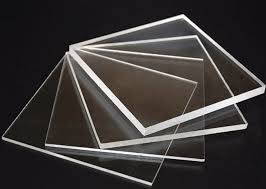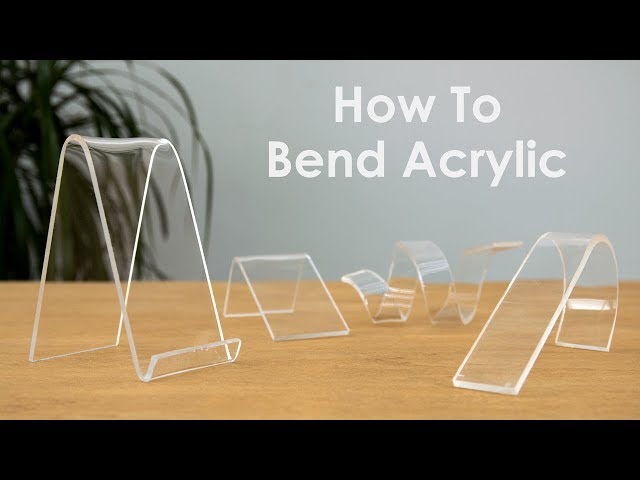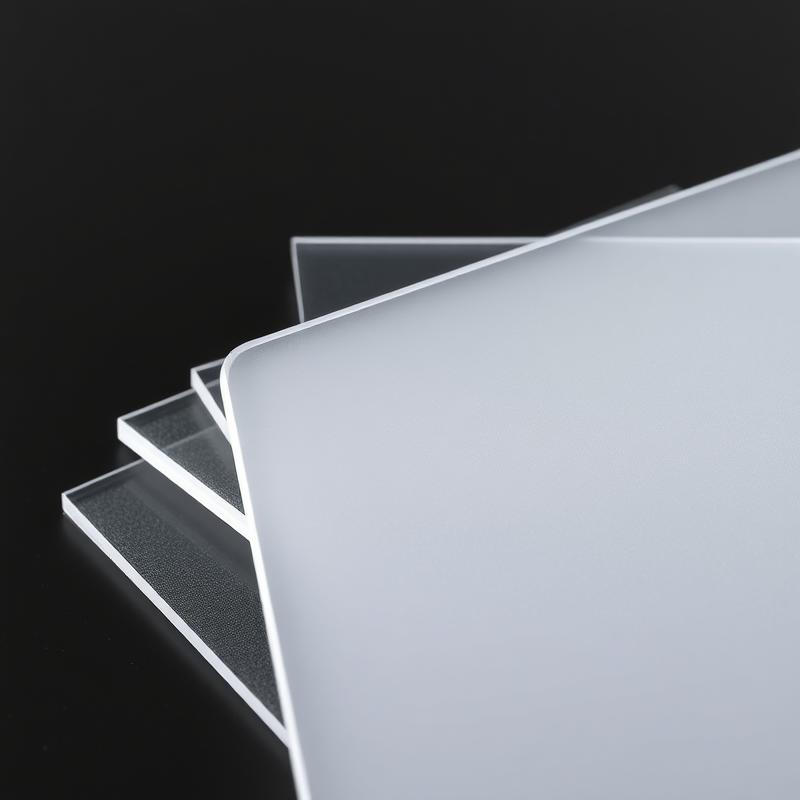-
Street Name, NY 38954

Guide to Printing on Acrylic Sheets: Transform Your Visual Displays
Table of Contents
Acrylic printing represents a revolutionary approach to visual displays, combining durability with stunning visual impact. As a leading acrylic sheet manufacturer, we’ve witnessed firsthand how print on acrylic transforms ordinary images into extraordinary visual statements. This comprehensive guide explores everything from the basics of acrylic printing to advanced techniques that supermarkets, building material distributors, and acrylic furniture factories can leverage to create eye-catching displays and products. Whether you’re looking to upgrade your retail signage or enhance your manufacturing capabilities, understanding the versatility and benefits of acrylic prints will give you a competitive edge in today’s market.
What Makes Acrylic Sheets Ideal for Printing?
Acrylic, also known as plexiglass or PMMA (polymethyl methacrylate), offers exceptional optical clarity and durability that makes it perfect for high-quality prints. As an acrylic sheet supplier, we’ve seen a dramatic increase in the demand for print-ready acrylic materials. But what exactly makes this substrate so special?
Acrylic sheets provide a sleek, glossy surface that enhances colors and details in ways that traditional paper or canvas cannot. When light passes through a clear acrylic sheet with printed imagery, it creates a dimensional effect that makes images appear to float, adding depth and vibrancy that’s simply unachievable with conventional printing materials.
Furthermore, the durability of acrylic means these prints maintain their quality for years without the fading or deterioration common with paper prints. This longevity makes acrylic prints particularly valuable for commercial environments where displays need to maintain their impact despite constant exposure to light and varying environmental conditions.
How Does the Acrylic Printing Process Work?
The process of printing on acrylic sheets involves several specialized techniques, each offering unique advantages. Understanding these methods will help you select the optimal approach for your specific needs.
Digital printing on acrylic has revolutionized the industry, allowing for direct application of vibrant colors to the acrylic surface. This printing method utilizes UV-curable inks that are exposed to UV light immediately after application, causing them to cure and bond firmly to the acrylic surface. This creates a durable finish resistant to scratching and fading.
Screen printing on acrylic offers another approach, particularly effective for large-format applications or when consistent color reproduction is crucial. This traditional technique involves pushing ink through a mesh screen onto the acrylic sheet, creating a layer of ink that adheres to the surface. While more labor-intensive than digital methods, screen printing can achieve special effects and textures that digital printing cannot replicate.
For both methods, preparation of the acrylic sheet is critical. The surface must be completely clean and free from dust or oils to ensure proper ink adhesion. After printing, additional protective coatings may be applied to enhance durability and protect against UV damage, ensuring the longevity of your acrylic print.
What Are the Different Types of Acrylic Available for Printing?
Not all acrylic sheets are created equal when it comes to printing applications. As an acrylic sheet factory, we produce various types of acrylic, each with specific properties suited to different printing requirements.
Clear acrylic represents the most popular choice for printing, as it allows for maximum light transmission and creates that distinctive “floating” effect when images are printed on either the front or reverse side. The transparency of clear acrylic sheets makes them ideal for backlit displays or situations where light will enhance the printed image.
Colored acrylic sheets offer creative possibilities for designers looking to incorporate base tints into their printed designs. These sheets come in various transparent, translucent, and opaque options, providing a colored substrate that interacts with printed elements in unique ways.
Frosted or matte acrylic diffuses light in a softer manner than clear acrylic, creating a sophisticated aesthetic that works particularly well for high-end retail displays or architectural applications. The textured surface of frosted acrylic sheet provides a different tactile quality and visual effect when printed upon.
Specialty acrylics, including mirrored acrylic or those with special textures, create distinctive effects when combined with printing techniques. For instance, printing on mirror Acrylic Sheet can create dramatic contrasts between reflective and printed areas.
Why Choose Acrylic Prints Over Other Display Materials?
The advantages of acrylic prints make them superior to traditional display materials in numerous applications. Understanding these benefits will help you appreciate why acrylic has become the preferred medium for premium visual displays.
Durability stands as one of the primary advantages of acrylic prints. Unlike paper or canvas prints that can tear, warp, or fade relatively quickly, acrylic is resistant to water damage, UV light exposure, and general wear. This exceptional durability makes acrylic prints particularly valuable in high-traffic retail environments or outdoor signage applications.
The optical clarity of acrylic enhances image quality in ways other materials cannot. When light passes through the acrylic, it illuminates the colors from behind, creating a vibrant, luminous effect that makes images appear more vivid and dynamic than when printed on opaque materials.
Versatility in installation is another significant advantage. Acrylic prints can be mounted onto walls using standoffs for a floating effect, displayed on counters with support blocks, or suspended from ceilings—options that give designers tremendous creative flexibility in creating impactful displays.
Additionally, acrylic prints offer a contemporary, high-end aesthetic that elevates any space. The sleek, glossy surface projects an image of quality and sophistication that resonates with customers and helps create a premium brand perception.
Can Custom Acrylic Prints Enhance Retail Environments?
For supermarkets and retail spaces, custom acrylic prints represent a powerful tool for creating memorable shopping experiences and driving sales through visual merchandising.
Strategic placement of stunning acrylic signage can draw customers to specific departments or featured products. The eye-catching nature of acrylic prints helps them stand out in busy retail environments, capturing attention and guiding customer flow through the store. High-quality product photography printed on acrylic creates premium displays that elevate merchandise presentation and justify higher price points.
Promotional messaging gains impact when presented on custom acrylic displays. The perceived value of the messaging increases simply by virtue of being presented on this premium medium. Additionally, the durability of acrylic prints means seasonal promotions can be stored and reused year after year, providing excellent return on investment compared to disposable signage options.
Branding opportunities abound with acrylic prints. Store logos, mission statements, and brand imagery gain visual impact when printed on high-quality acrylic glass sheet, reinforcing brand perception at every customer touchpoint. For building material distributors showcasing product lines, acrylic prints offer a professional way to present product information, technical specifications, and installation guides that will withstand handling in warehouse or showroom environments.
How Can Acrylic Furniture Manufacturers Leverage Printing Technology?
Acrylic furniture factories face unique challenges and opportunities when incorporating printing into their manufacturing processes. The integration of printed elements can dramatically enhance product offerings and open new market segments.
Direct printing onto furniture components allows for the creation of unique decorative elements without additional assembly or materials. Patterns, textures, or images can be printed directly onto clear acrylic sheet components, creating visual interest while maintaining the structural integrity of the piece.
Custom branding opportunities allow furniture manufacturers to incorporate client logos or custom designs into bespoke furniture pieces, adding value and exclusivity to commercial orders. This customization potential is particularly valuable for hospitality projects, retail store fixtures, or corporate office furnishings where brand consistency is critical.
Texture simulation through specialized printing techniques can mimic the appearance of other materials—such as marble, wood grain, or fabric—while maintaining the durability and cleanability advantages of acrylic. This expands design possibilities without compromising on the practical benefits of acrylic furniture.
For prototyping and product development, printing on acrylic enables furniture designers to test visual concepts before committing to full production runs, reducing waste and ensuring client satisfaction with the final aesthetic.
What Are the Best Practices for Achieving High-Quality Prints on Acrylic?
Achieving optimal results when printing on acrylic requires attention to several critical factors throughout the production process. These best practices ensure the highest quality output for your acrylic printing projects.
Image preparation is fundamental to quality results. High-resolution images (at least 300dpi) with proper color calibration will yield the best prints. When preparing files, consider how light will interact with the final product—some colors may appear more intense when backlit through clear acrylic.
Surface preparation cannot be overlooked. The acrylic surface must be thoroughly cleaned with a lint-free cloth and appropriate cleaner to remove any dust, fingerprints, or residues that could interfere with ink adhesion. Some applications may require treatment with primers or adhesive promoters to ensure optimal ink bonding.
Selecting appropriate printing materials specifically formulated for acrylic ensures the best adhesion and longevity. UV-curable inks provide excellent durability and color fastness, while specialized adhesives for face-mounting photographs to acrylic must be optically clear to prevent clouding or bubbling.
Environmental considerations during printing and curing are vital for consistent results. Temperature and humidity control in the printing environment helps prevent issues with ink drying or curing. After printing, proper curing time must be allowed before handling or packaging to ensure the durability of the printed surface.
How to Maintain and Care for Acrylic Prints?
The longevity of acrylic prints depends significantly on proper care and maintenance. Following these guidelines will help preserve the quality and appearance of your acrylic prints for years to come.
Cleaning acrylic prints requires gentle techniques to avoid scratching the surface. Use only soft, microfiber cloths and specially formulated acrylic cleaners that don’t contain ammonia or alcohol. Gently wipe the surface without applying excessive pressure that could scratch or damage the print.
Proper display placement helps prevent unnecessary wear. Avoid positioning acrylic prints in direct sunlight or near heat sources that could cause warping or color fading over time. While acrylic is resistant to fading compared to other materials, prolonged UV exposure will eventually affect any printed image.
Handling recommendations include supporting acrylic prints from the edges or back rather than touching the printed surface. When transporting acrylic prints, use protective materials such as foam sheets or bubble wrap to prevent scratches or impact damage.
Storage considerations are important for prints not currently on display. Store acrylic prints upright rather than stacked horizontally, with protective materials between each piece to prevent surface contact. Keep stored prints in climate-controlled environments to prevent warping from temperature fluctuations or humidity.
What Are the Latest Innovations in Acrylic Printing Technology?
The field of acrylic printing continues to evolve with exciting new technologies that expand creative possibilities and enhance print quality. Staying informed about these innovations helps businesses remain competitive in the visual display market.
Advanced UV printing technology now enables printing white ink as an underlay on colored acrylic sheets, allowing for vibrant colors even on non-clear substrates. This innovation expands design options by enabling effective printing on a wider range of acrylic colors and finishes.
Textural printing creates tactile effects through layered application of inks or special formulations that cure with dimensional qualities. These techniques add another sensory element to displays, encouraging customer interaction with printed materials.
Environmental advancements include the development of eco-friendly inks with lower VOC emissions and acrylic sheets manufactured with recycled content or using more sustainable production methods. These innovations address growing consumer demand for environmentally responsible display solutions.
Integration with digital technologies like augmented reality markers printed directly onto acrylic creates interactive displays that bridge physical and digital experiences. When scanned with mobile devices, these markers can launch digital content, creating engaging multi-channel customer experiences.
DIY vs. Professional: Should You Outsource Your Acrylic Printing Needs?
When considering acrylic printing projects, businesses often face the question of whether to attempt in-house production or partner with a professional acrylic sheet manufacturer with printing capabilities.
Equipment requirements for quality acrylic printing are substantial. Professional-grade UV printers capable of printing on rigid substrates represent a significant investment, along with curing equipment, handling systems, and finishing tools. For most businesses, the capital expenditure only makes sense with high-volume, consistent production needs.
Technical expertise plays a crucial role in successful acrylic printing. Understanding ink formulation, curing times, surface preparation, and file preparation requires specialized knowledge typically developed through years of experience. Professional print services employ technicians specifically trained in these areas.
Cost analysis often reveals that outsourcing makes financial sense for most businesses. When factoring in equipment costs, materials, labor, potential waste from errors, and the learning curve associated with developing in-house expertise, professional services frequently offer better value—particularly for projects requiring consistent high quality.
Quality considerations ultimately drive many decisions to outsource. Professional acrylic printing services maintain stringent quality control measures and have refined their processes to deliver consistent, superior results that can be difficult to achieve without specialized equipment and expertise.
FAQs About Printing on Acrylic Sheets
What thickness of acrylic sheet is best for printing?
The ideal thickness depends on your specific application. For most display purposes, 5mm acrylic sheet provides an excellent balance between durability and weight. Smaller pieces may use 2mm acrylic sheet to reduce cost and weight, while larger displays might require thicker material (8-10mm) to prevent bowing or flexing. Professional fabricators can help determine the optimal thickness based on your display size and mounting method.
How long will prints on acrylic last?
Properly produced acrylic prints using UV-curable inks can last 5-10 years or more without significant fading, even in well-lit environments. Prints protected from direct sunlight and extreme temperature fluctuations will maintain their vibrancy considerably longer. The acrylic itself is extremely durable, with a lifespan measured in decades rather than years.
Can any image be printed on acrylic?
While technically most images can be printed on acrylic, the best results come from high-resolution images (minimum 300dpi at print size) with good contrast and vibrant colors. Images with subtle details and gradients can look particularly striking on acrylic due to the depth effect created when light passes through the material. Professional printing services can evaluate your images and recommend adjustments to optimize them for acrylic printing.
Is acrylic printing environmentally friendly?
Modern acrylic printing has become increasingly environmentally responsible. Many manufacturers now offer acrylic sheets with recycled content, and UV-curable inks emit fewer volatile organic compounds (VOCs) than solvent-based alternatives. Additionally, the exceptional durability of acrylic prints means they don’t need frequent replacement, reducing waste compared to more temporary signage solutions.
How do I choose between face-mounting and direct printing on acrylic?
Face-mounting involves printing an image on photographic paper or film and then mounting it to the back of clear acrylic, while direct printing applies ink directly to the acrylic surface. Face-mounting often provides slightly better image quality and depth for photographic images, while direct printing offers more versatility with specialty inks, printing on colored acrylic, and creating multi-layered effects. Your specific application and desired aesthetic should guide this choice.
What mounting options are available for acrylic prints?
Acrylic prints can be mounted using various systems, including standoffs (metal hardware that creates a floating effect), full-frame supports, easel backs for tabletop display, or suspension systems using cables. Each mounting method creates a different aesthetic effect and suits different display environments. Consider both the visual impact and the practical installation requirements when selecting mounting hardware for your acrylic prints.
Key Takeaways
- Exceptional Visual Impact: Acrylic prints deliver unmatched depth, vibrancy, and visual appeal compared to traditional printing substrates.
- Outstanding Durability: Properly produced acrylic prints resist fading, water damage, and wear, making them ideal for high-traffic commercial environments.
- Versatile Applications: From retail signage to furniture components, acrylic printing offers solutions for diverse business needs.
- Material Options: Different types of acrylic, from textured acrylic sheet to clear and colored varieties, provide various creative possibilities.
- Professional Production: While DIY options exist, partnering with an experienced acrylic sheet manufacturer ensures optimal quality and consistency.
- Investment Value: Though initially more costly than some alternatives, the longevity and impact of acrylic prints deliver excellent return on investment.
- Maintenance Simplicity: Simple care with appropriate cleaners and handling techniques preserves acrylic prints for years.
- Environmental Considerations: Modern acrylic printing technologies offer more sustainable options than earlier methods.
As a leading acrylic sheet factory with decades of experience serving supermarkets, building material distributors, and acrylic furniture factories, we’re committed to providing the highest quality materials for your printing projects. Our team of experts is ready to guide you through material selection, printing options, and customization possibilities to help you achieve stunning visual displays that capture attention and drive business results. Please contact our team today to discuss how wholesale acrylic sheets with custom printing can transform your next project.






